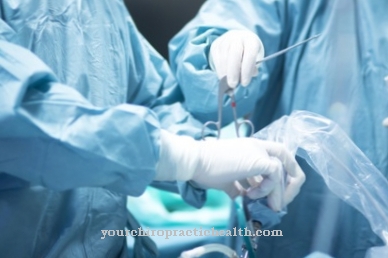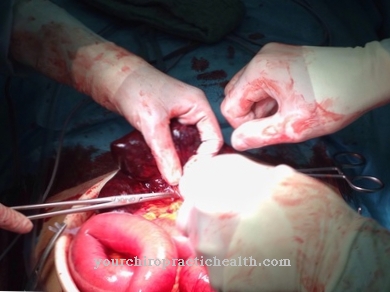The intracytoplasmic sperm injection, ICSI, is a tried and tested method of reproductive medicine that has helped many childless couples to have a child. ICSI is now the most frequently used method in artificial insemination.
What is intracytoplasmic sperm injection?

Very different fertility disorders on a physical or emotional level can lead to an unfulfilled desire to have children in men and women. Modern reproductive medicine can be very helpful in the case of many fertility disorders, in order to ultimately help to have the long-awaited child. The forerunner of intracytoplasmic sperm injection is the fusion of egg and sperm cells in the test tube, better known as in vitro fertilization, or IVF for short.
This means fertilization outside the body, where fertilization normally takes place. ICSI is a special form of IVF and has been carried out since 1992 after years of pre-clinical research. So there are currently not many adults who have been conceived using the ICSI method.
The intracytoplasmic sperm injection is particularly interesting for those couple relationships in which the man's sperm is the cause of the fertility disorder. The sperm quality is insufficient in terms of sufficient motility or mobility of the sperm for natural fertilization. Or the number of sperm in the ejaculate is significantly reduced, so that natural fertilization is not possible. In both cases, the sperm cells do not manage to actively penetrate a single cell on their own. The ICSI method simulates precisely this process by actively fusing a single sperm with an egg cell under microscopic control.
Function, effect & goals
An intracytoplasmic sperm injection is now the method of choice in cases of proven impaired male fertility. In the so-called obstructive azoospermia, sperm cannot enter the vas deferens from the testicles due to an obstruction. No ICSI can be done for this disease because there are no sperm in the seminal fluid.
The prerequisite for an intracytoplasmic sperm injection is always the presence of sperm cells in the sperm fluid, even if there are only a few. Normally, one milliliter of sperm contains millions of healthy sperm cells. With the so-called MESA and TESE procedure, the sperm cells in obstructive azoospermia are taken directly from the tissue of the testicle or epididymis. Intracytoplasmic sperm injection is the method of choice for all forms of non-obstructive azoospermia and oligospermia, i.e. the greatly reduced number of sperm cells in sperm.
From the few available sperm, the best one for an ICSI treatment has to be filtered out in the laboratory under the light microscope. Only mobile and anatomically intact sperm are used for ICSI, as otherwise fertilization is not to be expected. On the day of the intracytoplasmic sperm injection, the couple must go to the fertility clinic together.
The man must donate sperm while the woman is being prepared for the procedure. Before an ICSI treatment, women are given high doses of sex hormones in order to better control the day of ovulation. Blood values as well as the size and maturity of the follicles are checked regularly. Once ovulation is triggered, eggs are collected through the vagina. The fresh sperm must now be available, but it is also possible to use a frozen portion of sperm for the procedure.
The actual intracytoplasmic sperm injection now takes place under the microscope. For this purpose, a single sperm is inserted directly into the egg cell using a special glass pipette. The egg cell artificially fertilized in this way is placed in a special nutrient solution for incubation in a heating cabinet at a temperature of 37 degrees Celsius.
Only if fertilization is successful will embryos mature within 2 to 5 days, which can then be transferred through the vagina into the uterus with a fine needle. If an embryo nests in the uterine lining and cells begin to divide, the woman is considered pregnant and the process of intracytoplasmic sperm injection has been successfully completed.
Risks, side effects & dangers
Not every ICSI is successful, at the latest after several unsuccessful attempts, the couple can develop a certain degree of frustration, which can be very stressful psychologically over the long term. The exact mechanisms why some ICSI do not lead to successful pregnancy are currently unknown. Hormonal and genetic influences are suspected. The financial burden for the couple from several ICSI attempts should not be underestimated.
The state subsidies have been steadily reduced in recent years, so that a large part of the costs must be borne by the couples themselves. The long-term consequences of ICSI cannot yet be assessed. Because so far there are only a few adults who were conceived using ICSI. However, the newborn ICSI children did not show any abnormalities compared to infants from normal births.
The genetic risks cannot yet be conclusively assessed, but the cost-benefit risk of an ICSI treatment is considered medically acceptable. The average maximum birth rate through intracytoplasmic sperm injections is currently 20 percent. Everything is being done to further increase this even meager success rate, which also requires further basic research.
In the context of an overstimulation syndrome due to the administration of hormones, serious but reversible side effects can occur in women. As with natural fertility, with ICSI, the younger she is at the time of the procedure, the easier it is to get pregnant. Another special feature of intracytoplasmic sperm injection is the possibility of multiple pregnancies if two or three intact embryos are accidentally transferred.













.jpg)

.jpg)
.jpg)











.jpg)